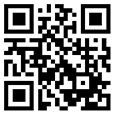0
新航道官方在线客服

阅读量:
有没有这样的时刻?回答口语问题时,心里想了好多观点,甚至可以用中文侃侃而谈,要求用英文回答时却支支吾吾,磕磕绊绊?你熟不熟悉这种情节?准备许久后依然忘词,纠结下个英文单词是什么?你是不是那个窘迫的小糊涂,说完之后,老师同学们都一头雾水的看着你,不知所云?殊不知你是立论不清,缺乏阐述。因此这立论“四大法宝”将使你有如神助.

回答下面的问题,每个问题回答近40秒到一分钟,录音,让老师打分。之后在学过我们的四大技巧之后再录音,给老师打分,并分析出涨分或者压分的理由,相信这个过程你一定能有所收获。
Q1:What are some suggestions for people who are afraid of public speaking? (三级,UNIT 7/ P68)
Q2:Which one do you prefer? Electronic or paper dictionaries? (三级,UNIT 10/ P100)
Q3:How does technology influence our lives? (四级,UNIT 3/P 29)
Q4:Do you think intelligent people are more likely to succeed? (三级,UNIT 5/ P48)
以上四个问题多为特殊疑问句,是不是回答的时候有刚才说的那些问题呢?那么怎么拓展我们的观点呢?特殊疑问句不是回答一两句就万事大吉。我们需要进一步力证我们的观点。怎样做到了?下面,我们就以例为证,一一说明。
N1: COMMON SENSE
简而言之,在论述时候,说与题干密切相关,显而易见,普遍认可的内容,就普遍认知与题干紧扣,从五官感受进行细节描述,具体内容加以进一步阐释,或者对比论述,不仅能使论点清晰流畅。而且结构一目了然,为读者或听众减轻负担,是一个支撑论点的好方法。经常出现的表述有:
It’s commonly accepted that ......./
Its widely/generally said that ......../
Everybody knows that........./
It’s a common knowledge that........./等等
具体论述以下为例:
Q1:What are some suggestions for people who are afraid of public speaking? (三级,UNIT 7/ P68)
One suggestion would be to get prepared in advance. It’s commonly accepted that some people would feel unavoidably(不可避免的) nervous when they are required to speak in public. Everybody knows that being familiar with your material may give you confidence. If you don’t know your material well, you maybe get nervous or get lost. Besides, practicing your presentation and timing yourself can make you less afraid.
简析:题目问的是建议,所以引导学生直接给出建议,之后解释为什么要这么做。首句One suggestion would be to get prepared in advance.之后,立论时,引导学生设想公众演讲的人的感受。众所诸知,人一定会感到紧张。It’s commonly accepted that some people would feel unavoidably(不可避免的) nervous when they are required to speak in public.所以提前准备包括了熟悉材料,因为它能给你自信,这默认是大家都知道的。即Everybody knows that being familiar with your material may give you confidence.除此之外,引导学生用besides 连接第二个拓展,提前准备还包括,掐时间练习演讲,这样就能减轻紧张或害怕。引导学生说出正确的表达,可为 practicing your presentation and timing yourself can make you less afraid.这样就有总有分的回答了问题。
N2: FACTS AND STATISTICS
字面意思,任何观点不能孤立存在,事实胜于雄辩,用确凿、典型的事实来证明观点,会增强文章的说服力。用一些事实描述或者数据直接说明问题,这类事实和数据论述包括事物大小,尺寸,时间跨度等等一系列用数字丈量的内容都可以用来支撑自己的观点。做这种方法的优点是清晰明亮,一目了然。最重要的是,有数据支撑的论点更加具有力量,客观公正,更能以理服人。缺点是可用这种方法的事物和话题有限,不能涵盖太多的内容。常见的标志性表达有:It is a fact that ......./One important statistics is that ........./According to one estimate/等等。这种表达都是偏从句类型的,但是在运用的时候,大家一定要注意多用替换,注意语义连贯自然。
具体论述以下为例:
Q2:Which one do you prefer? Electronic or paper dictionaries? (三级,UNIT 10/ P100)
Honestly, I prefer to use electronic dictionary because it’s faster than paper dictionaries. In my eyes, what does matter is speed. One interesting statistic shows that it takes two seconds to look up a word with an electronic dictionary. Compare that to nearly a few minutes with a paper one. That’s why using an electronic dictionary is so much better.
简析:首先还是直接回答问题和原因。即I prefer to use electronic dictionary.引导学生用连词进一步承接解释原因。比如,In my eyes, To illustrate, one explanation is that ...等等。电子词典就是速度快,人们关心的就是速度。所以需要特别用数据来说明快多少。用从句引出,数据显示,One interesting statistic shows that......电子词典只用几秒就查一个词,即It takes two seconds to look up a word with an electronic dictionary.相比之下,引导学生运用对比,Compare A to B.纸质词典耗时有可能几分钟,即Compare that to nearly a few minutes with a paper one.结论,除了therefore,也引导学生说出That’s why.......。即That’s why using an electronic dictionary is so much better.
N3: EXAMPLES AND DETAILS
这类方法相信同学们在口语中运用的次数数不甚数了。例证法是亮明观点后举出具体实例证明观点的论证方法。需要注意的是,举例子把例子摆在论点后,要记得揭示论点论据之间的内在联系,加以充分的分析、说理,把观点阐述清楚,这样就体现内在的逻辑力量。内在联系也一目了然。例子的描述尽可能带到一些细节描写,这样能讲清楚说明白,而且通俗易。简言之,就是摆例子后讲道理。另外,例证法中所选的例子,一定要有典型性,这样才能说明问题。第三个问题,我们就可以举例论证科技对我们生活的带来的影响,下面以例说明:
Q3:How does technology influence our lives? (四级,UNIT 3/P 29)
观点:
Technological advances have had a huge influence on our living standards.
举例1:
One example was that the state-funded scientific research program(公立科研项目)on new drugs has successfully helped us deal with the previously fatal diseases and improved life expectancy(寿命).
举例2:
Another example was that medical advances have minimized the suffering we experienced as a result of health problems.
论述总结(重申观点):
The reason why so much improvement has been made was traced back to the technological strides. It was the technological breakthroughs(技术突破)that have made such a huge difference to our lives.
简析:题目要求简述科技对生活的影响。首句简明说出科技对生活的确有巨大影响。引导全段,之后再一一举例说明怎么影响,什么影响,将其具体化。
科技进步即Technological advances,所以首即Technological advances have had a huge influence on our living standards.举例可以使用for example,such as,like等等。也可引导学生用one example was that ....来引导长例句。医疗方面的好处是治疗不治之症,延长寿命。这个词伙可先引导学生说出自己的版本,之后再优化,让其记住正确的说法,即helped deal with the previously fatal diseases and improved life expectancy(寿命)。还有一个例子,也可用一样的句式,注意是Another example was that...引导的.之后引导学生可用强调句说出结论,强调主句。强调句的结构式It was ...that ......。有影响还可以用make a difference 来表达。即It was the technological breakthroughs(技术突破) that have made such a huge difference to our lives.
N4: PROVERBS
第四点顾名思义,即运用俗语为自己的论述增加光彩,既有俗语,就有一定道理。经得起长期推敲和检验的。俗语一处,语惊四座。但在使用的时候要注意,俗语俚语需要长期积累,并在使用时要注意推敲语境,不要乱用瞎用,避免画蛇添足。我们就第四个问题举例说明:
Q4:Do you think intelligent people are more likely to succeed? (三级,UNIT 5/ P48)
No, I think being intelligent does not give people an edge over others on their way to success for the reason that It takes many ways to help one succeed, like persistence, stamina, money, education even luck. As a proverb goes: Where there is a will, there is a way(有志者,事竟成). According to this, one’s will might be as indispensable as the intelligence. (基于此,人的毅力与智力一样重要,不可或缺。)简析:这个题目讨论的是更聪明是否就意味着更容易成功。直接回答问题,引导学生说出观点及原因。否定的话,因为智慧不是成功的条件。原因可用for the reason that 连接两个句子。即No, I think being intelligent does not give people an edge over others on their way to success for the reason that It takes many ways to help one succeed.之后引导学生想想成功和例子中的相关的俗语例证其重要性。所以引导学生想到有志者事竟成的谚语。并掌握表达,用俗语有云引导整句,即As a proverb goes:........之后结论,意志力可能也是不可或缺的。即one’s will might be as indispensable as the intelligence.这样做到每句话都有理有据,立论就稳了。
从以上认证详尽的例子可以看出,口语论证中不仅仅只有一种方法,我们在阐述论点的时候一定要有的放矢,按不同话题的特点选取最合适的方法进行论证。力求清晰明了,一针见血。另外,大家在平时也要多多积累使用的干货内容和素材,留心身边的英语,善于观察身边的小事,勤于思考,这样不管遇到针对什么口语话题,大家都能做到有话说,有理说,有例说,这样的你相信一定是闪闪发光的你!
更多雅思考试干货敬请关注新航道雅思考试频道
